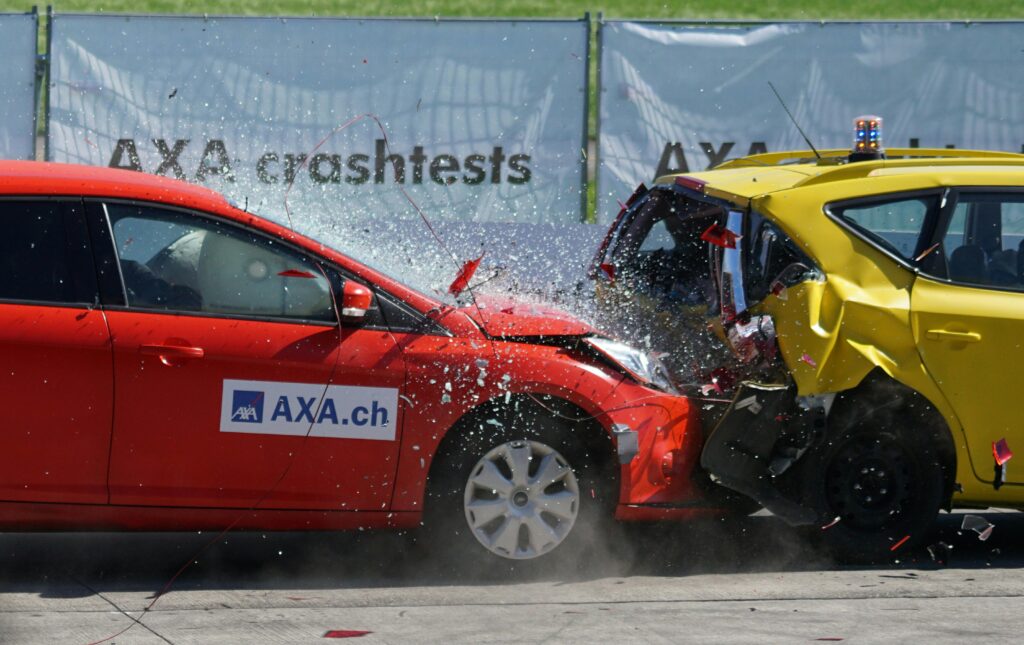
A rear-end collision occurs when a vehicle crashes into another vehicle in front of it. These are among the most common types of collisions, comprising up to one-third of all crashes on the road. Fault for these types of cases usually lies with the driver in the rear, though we must consider the full circumstances before fault can be truly determined. When you need help securing injury-related damages from getting rear-ended, our vehicle accident attorneys are here to represent you.
Distracted driving is almost an epidemic at this point, and can involve cell phones, texting, talking to people in the car, eating, dealing with a pet, or managing kids in the backseat. About 10% of all fatalities are a result of rear-end collisions from distracted driving, and 18% of all crashes involving injuries are rear-end collisions.
Our firm is involved in a number of distracted driving awareness campaigns, as we have seen the painful results of texting and driving. If you divert your eyes for five seconds to send a text, and you are going 55 miles per hour, then you have already driven the length of a football field. Typically, all states have a universal rule of the road which requires drivers to follow the vehicle in front of them at a safe distance that gives them enough time to stop.
Indiana has a comparative fault law, so even though the driver in the rear may have had fault, there could be some fault attributed to the driver in front if they slammed on their brakes for no reason and knew the person behind them was tailgating, or if they changed lanes and pulled in front of someone.
Tailgating is different from distracted driving, but is a significant cause for rear-end accidents. It occurs when a driver behind another vehicle does not leave sufficient distance to stop if the vehicle in front of them stops quickly. Defining behavior as “reasonable” is dependent upon speed and the road conditions, but generally speaking, motorists can avoid tailgating by changing to the other lane.
All states have both criminal laws and civil responsibilities for failing to follow tailgating rules. However, comparative fault may exist if the front driver was tailgating the next person in front of them so closely when they slammed on their brakes, hitting the person in front of them and also getting struck from behind. In that situation, both vehicles are likely somewhat at fault.
Our personal injury attorneys can first look into whether charges were filed against the tailgater and if they plead guilty. We ask our clients to take photos of their vehicle, the vehicle of the person who hit them, the weather at the time, and the roadway to get a sense of the layout and any obstructions. This can be a big factor in determining liability for a rear-end crash.
It is important to identify any witnesses, get their contact information, and seek medical treatment immediately. We could also put the defendant’s insurance company on notice, update your own insurance company on your injuries and their potential value, and make sure the plaintiff does not do anything to harm their case, like skipping medical treatment or making improper statements. Those mistakes could potentially put more liability onto you, rather than the defendant.
Drivers could cut out a lot of injuries and property damage claims if they stopped tailgating. However, rear-end crashes remain a common occurrence and you should be ready to prove liability if you get injured.
We can protect your rights, obtain and safeguard evidence, talk to the police officers or prosecutor’s office, and examine the case for liability. Speak with Fleschner, Stark, Tanoos & Newlin now for legal guidance.
Fleschner, Stark, Tanoos & Newlin
 N/a
N/a
The financial burden that often comes with a serious injury can be too much for many people to bear. Unexpected medical debt, damaged personal property, and the sudden loss of income can impact the budgets of most families. The good news is that a successful injury claim could help reduce that financial strain after a serious accident. Get in touch with a Terre Haute personal injury lawyer with Fleschner, Stark, Tanoos & Newlin to learn more.
Copyright ©2025 Fleschner, Stark, Tanoos & Newlin,